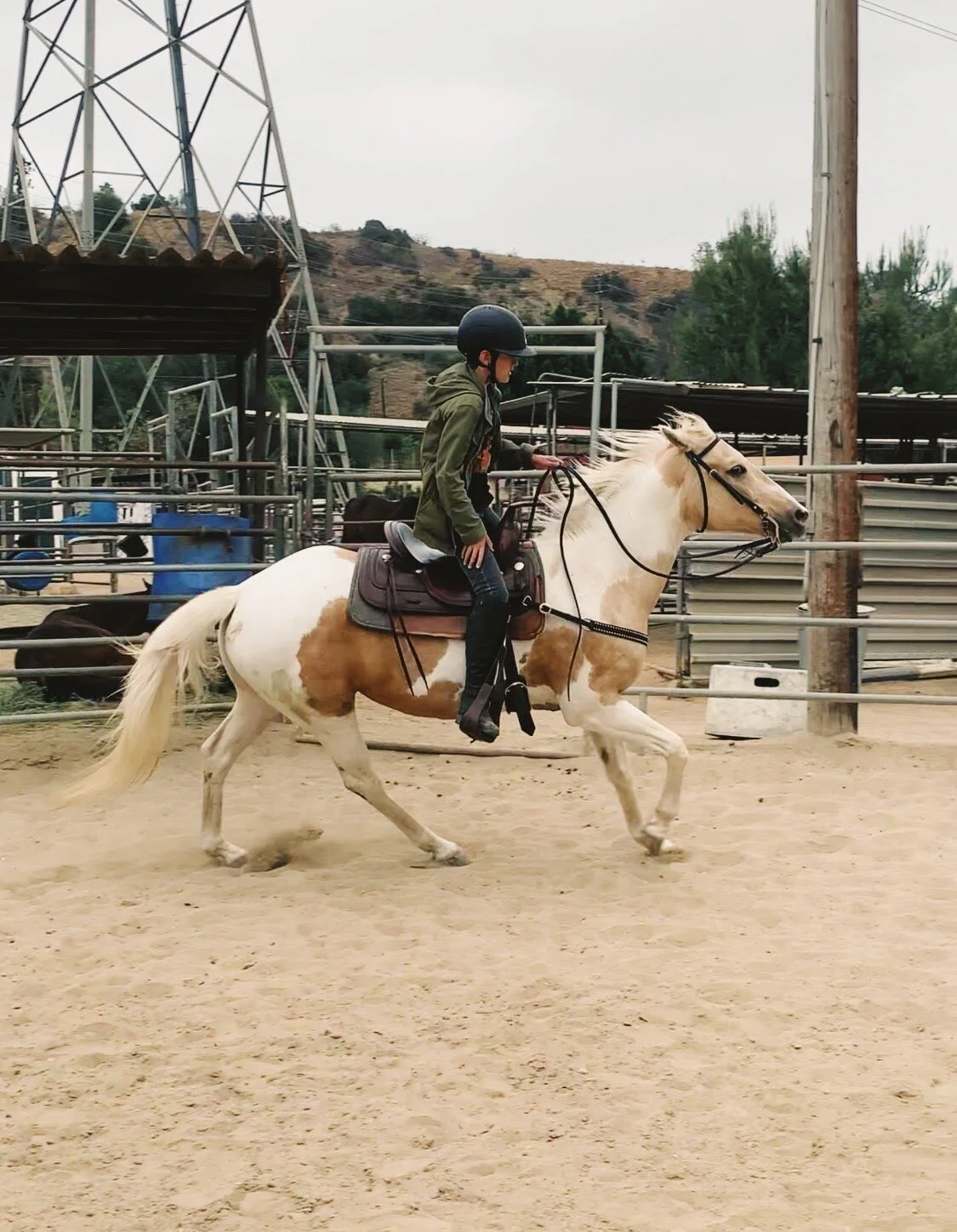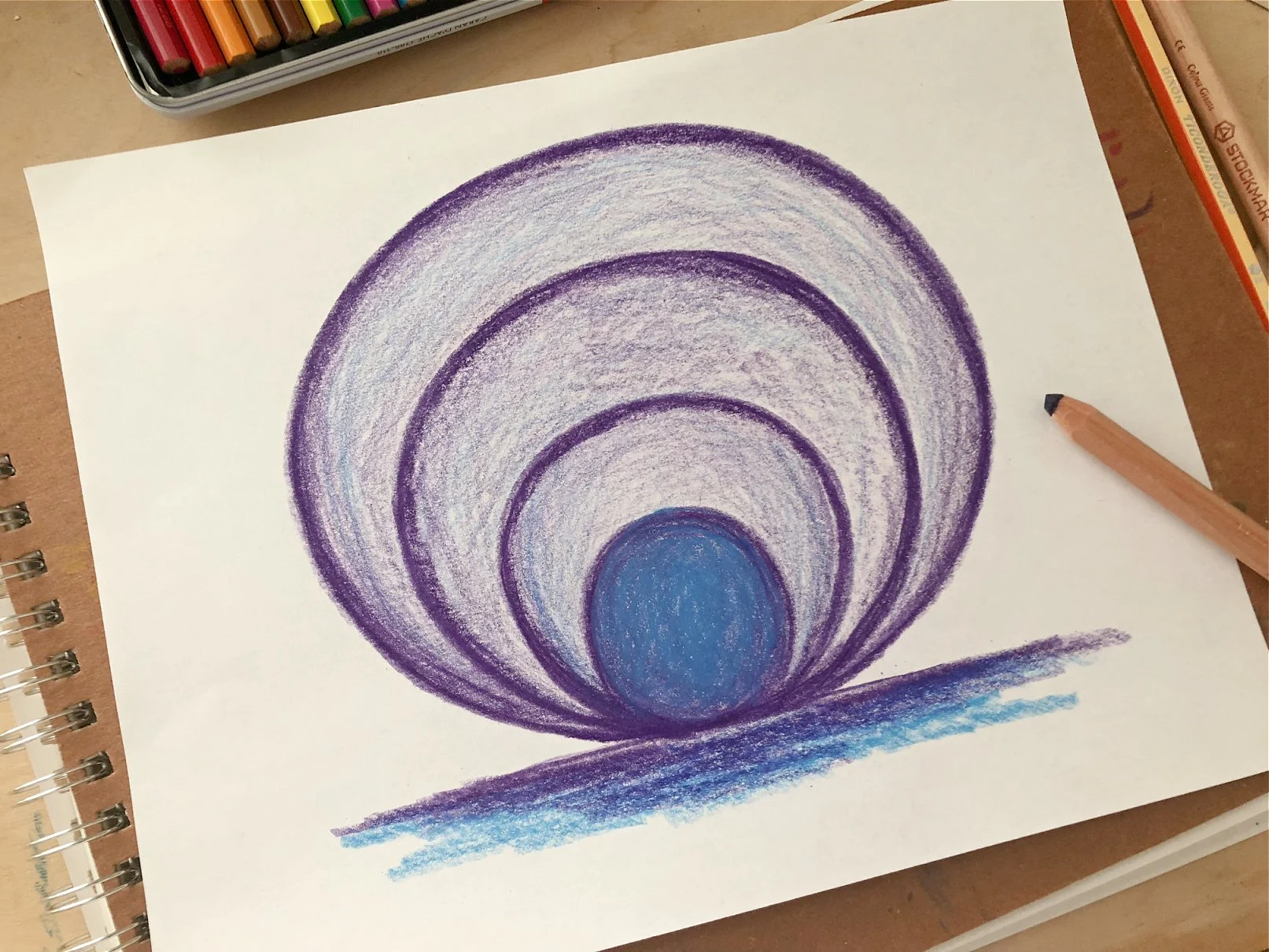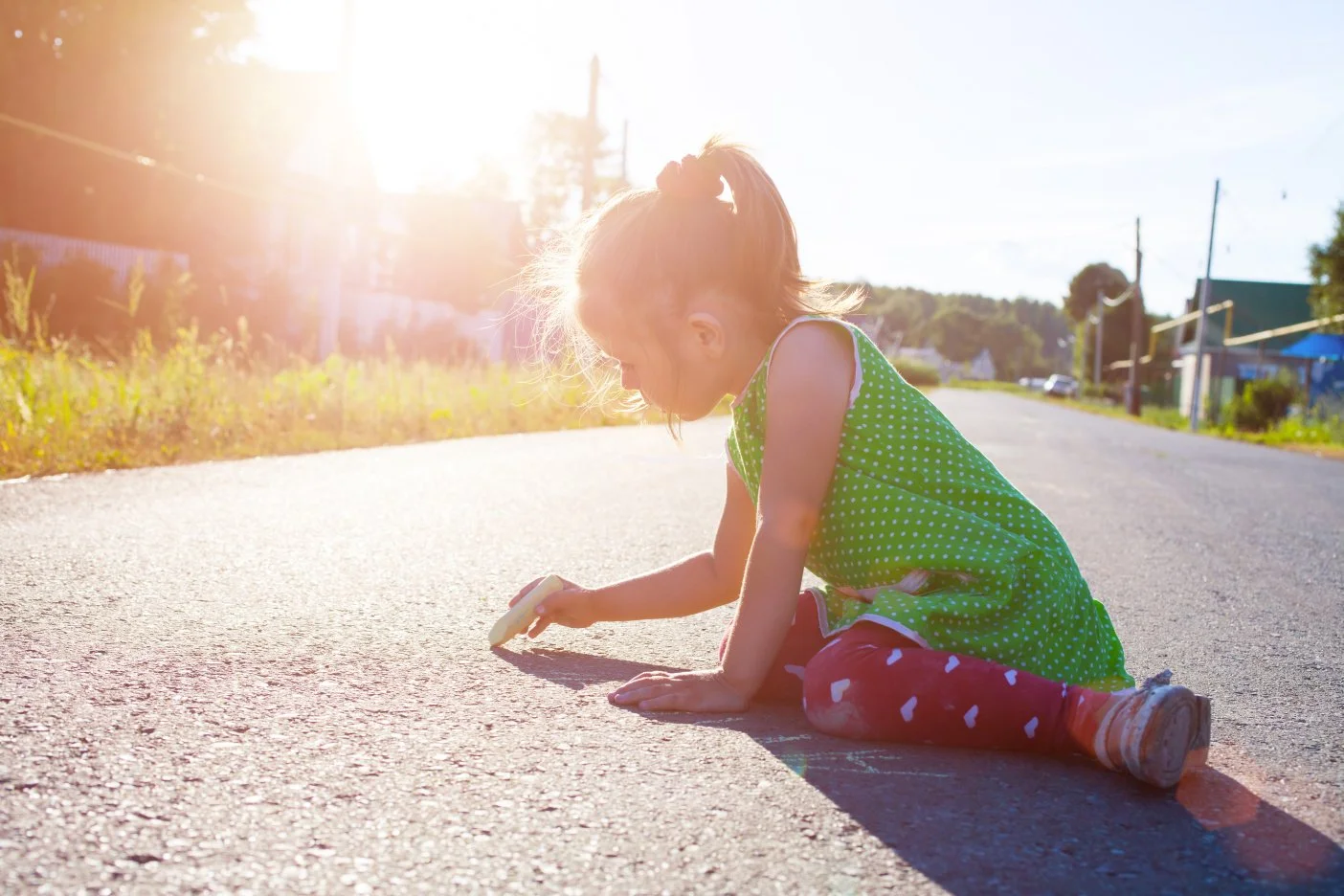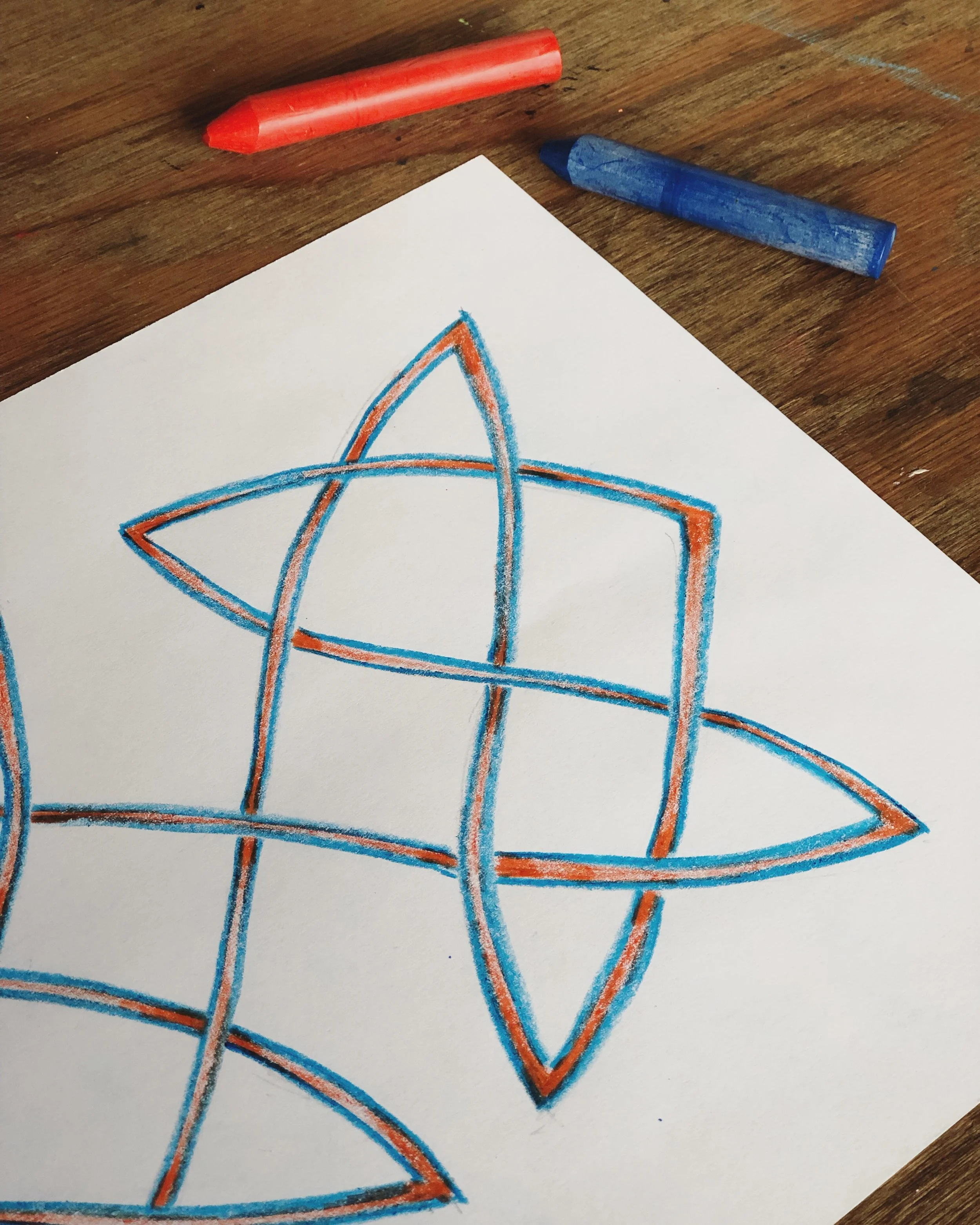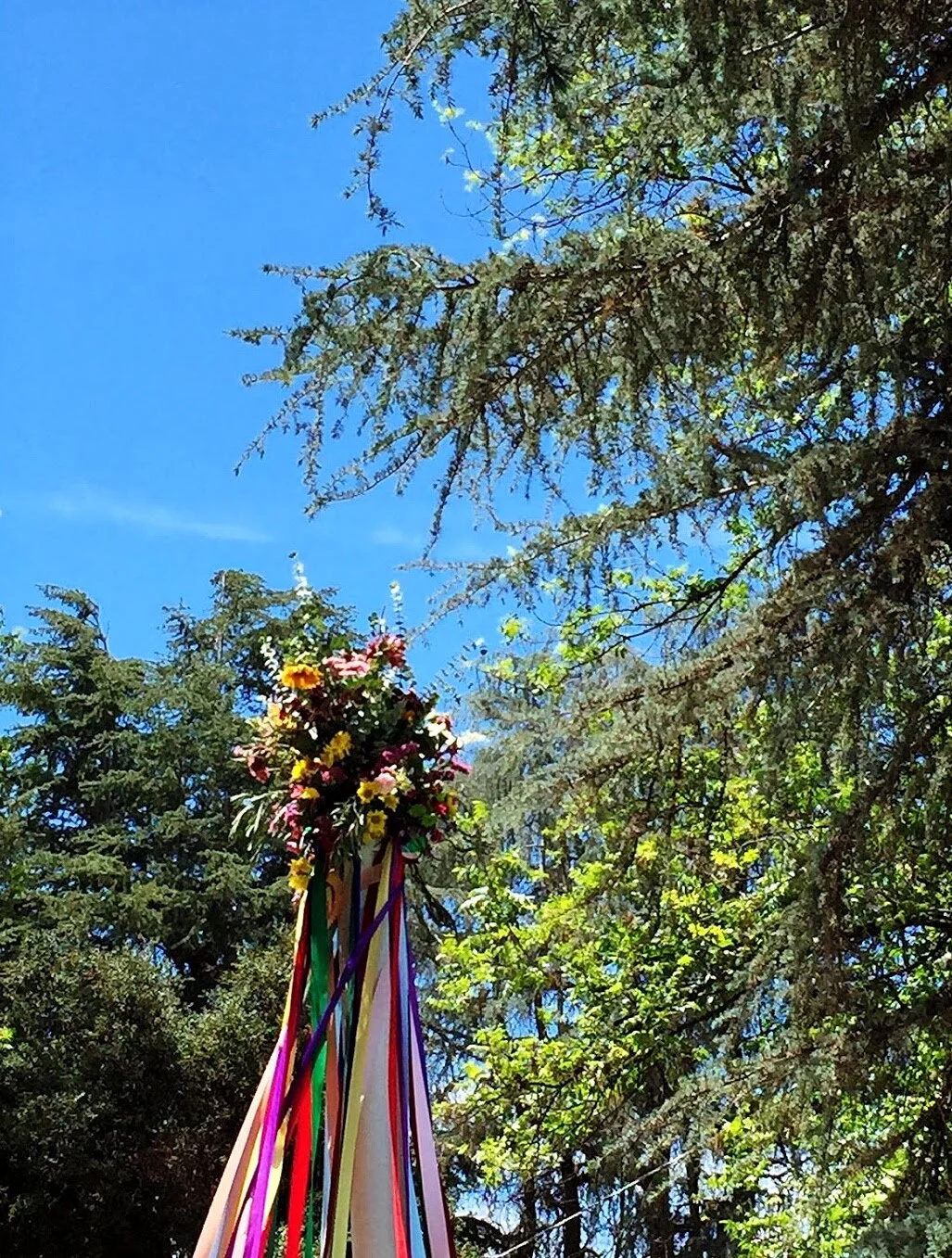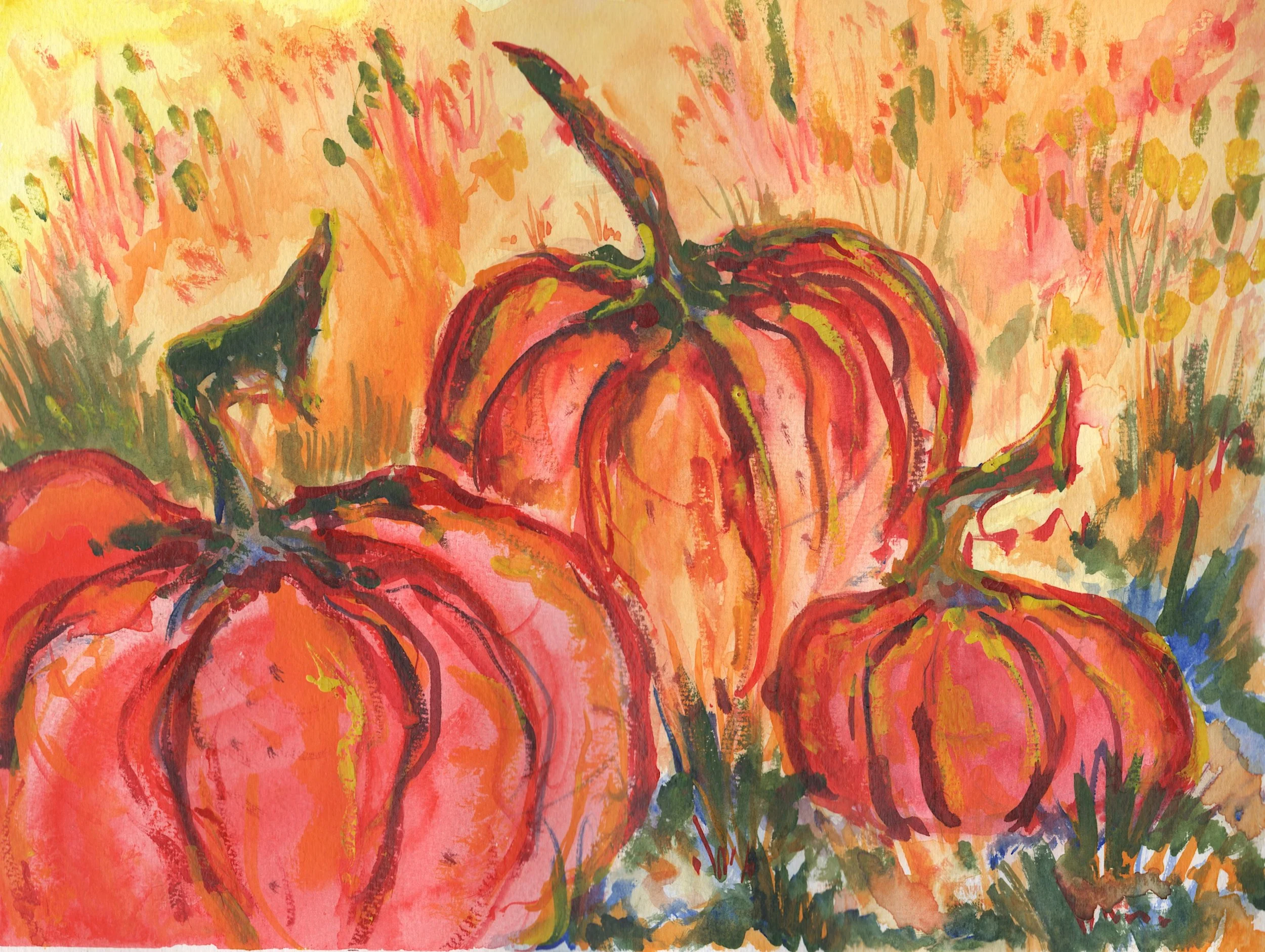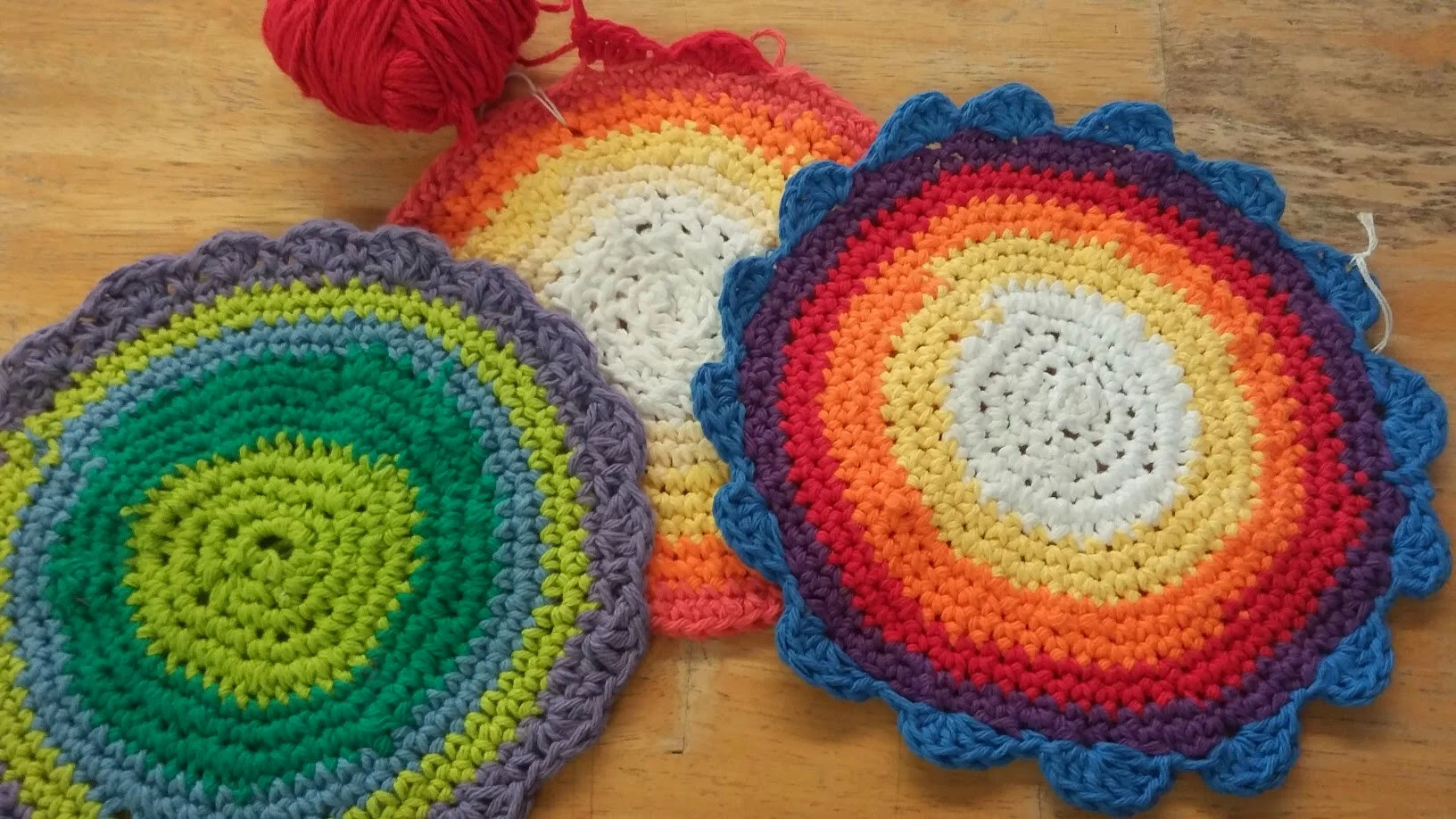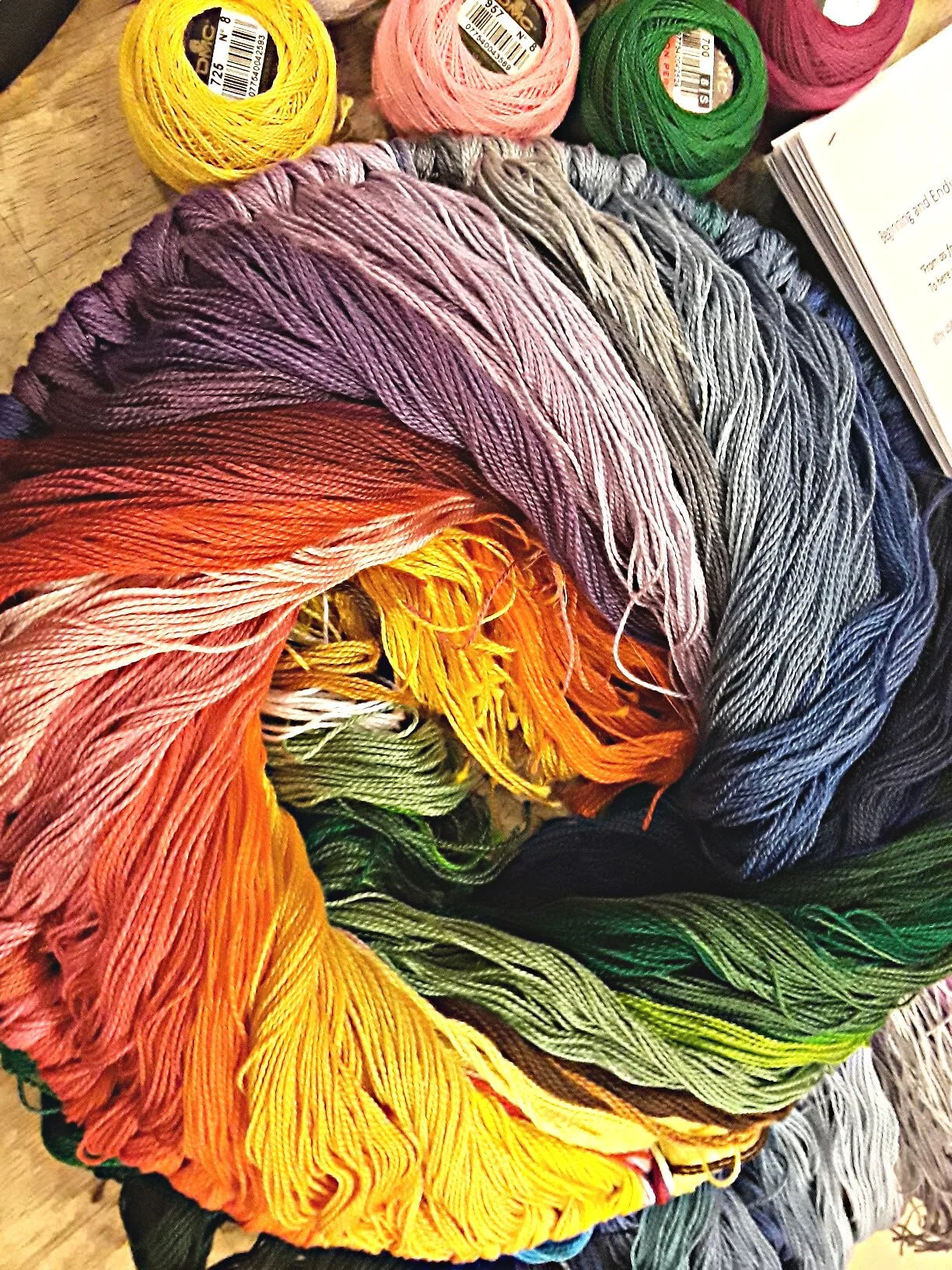
Waldorfish Blog
Waldorf Grade Two Painting: Coming into Form
What forms can we find in the color?
In first grade, the experience of painting becomes a formal and rhythmical experience.
Colors are introduced very slowly and purposefully; each is given a personality and mood. The unfolding of color in this way allows the children to build a connection to each as individuals. In the Grade One painting course, the colors carmine red, lemon yellow, and ultramarine are introduced and worked with through the use of verse and song. (To learn more about first grade painting and the philosophy behind it, click here!)
“Forms by themselves are of course stationary; they are motionless and stay where they are. But the moment the form has color the inner movement of the color sets the form in motion and the world’s ripples, spiritual ripples, pass through it. If you color a form you immediately give it a soul quality of a universal kind, because the color belongs to more than just the form...”
How does watercolor painting evolve with the growing second grader?
At this age, it is important to keep in the mind the child as they are now.
They are very much living in the innocence of early childhood and beginning to move away from it as they grow. First graders view the world in their wholeness and purity, while the growing second grader has a new capacity to see human nature in duality- the higher nature of humans, and the less virtuous parts of us as well.
Beautiful mountains in simple colors!
As the second grader views the world through a new lens, story becomes the main tool the teacher (whether they are in the classroom or at home) uses to introduce and build connection with color. With the stories of Noble People, animals, and fables, the teacher is meeting the child where they are, showing them the different aspects of how human beings can live and influence the world in which we live. These stories are examples of how humans can choose to act in their higher nature, and not live in the more “animal” nature of mischievous or dark aspects of the human being.
“...The color the individual form is given links it up with its surroundings; in fact it links it altogether in the world. You could say that when you color a form you should feel that what you are doing to the form is ensouling it. You are breathing soul into dead form when you give it color.
-Rudolf Steiner”
At this age, children still have rich and active imaginations, and with story and verse, the essence of colors are introduced, allowing the children to forge a connection with the color on a deep level. Carmine red is strong and fiery, golden yellow is warm, and stronger than the lemon yellow, and prussian blue has a new and more individual quality than the ultramarine, especially when it meets another color on the page.
Beautiful tulips from our second grade painting course.
The meeting of these new secondary colors is a new and essential experience for the second grader.
The children view not only how colors are as they stand alone, but how they are as they meet. How do they relate to each other? To their peers? What combinations create something beautiful or murky? Here again holds the theme of duality that the second grader is beginning to experience within themselves and observing in the world around them.
With duality, the second grader begins to paint forms- landscapes, the ocean, sunrises and sunsets, streams, and more. Through painting, the world comes into form, for example, the shades of blue become the waves of the ocean, the yellows form into happy flowers, and the reds flames of fire. As the child forms, and views the world, so does their experience in painting class.
Are you interested in bringing watercolor painting to your (home)school curriculum? Check out our Grade One and Grade Two painting courses! Our amazing instructor Amanda Mercer has created online courses that provide everything you need to make weekly painting lessons a doable, fun, and meaningful experience.
About the Author
Amanda Ziadeh Mercer is a dynamic Waldorf Teacher! She has had the pleasure of working with children in varying stages of development, ranging from infants in Parent-Child programs to the more mature students of the eighth grade. This wide range of experiences has gifted her a full picture of the developmental stages of childhood.
More from Waldorfish:
When children rush - 3 things to consider
Waldorfish Form Drawing teacher Rev Bowen was recently asked by a caregiver enrolled in the course how to work with a child who appears to be rushing through their work. His reply is relevant regardless of the subject being discussed, and we wanted to share it with the Waldorfish community at large!
There are typically three reasons children rush:
1. They feel the work is far too easy, which is never the complete picture.
2. They find the work too challenging.
3. They have a soul habit that the adults around them have engendered, which is virtually always true.
To this lattermost point, I will just remind us all that our culture is fast-paced, convenience, and results-driven. It is very difficult to foster a practice of care and consciousness in these times--but we absolutely must do so.
Take time to observe a child who rushes through their work- you may be surprised at what you discover!
Let’s take a closer look at these 3 possibilities:
1. If the work is actually easy for the student, I then give great focus to the beauty of the work. It is never enough to be right. We must require the "bright" or "advanced" students to take even greater care to be neat, organized, and even beautiful in what they deliver. This will help them enormously when they reach the point of encountering work that truly challenges them.
Picture the math whiz who can do so much work mentally. Their written work in algebra can be scritchy-scratchy, but they have the mental ability to consistently render correct answers. This child may have a destiny to reach great heights in mathematics. However, this will be hindered in advanced classes--perhaps not until late high school or collegiate studies--if the student was never required to work in an organized way. This is true to some extent for every child in all parts of life. Organization and presentation helps.
2. If they find the work too challenging, it is for us to realize this, and adjust so that the work challenges them in a way that they can reach. It is okay for children to sweat. It is okay for a frustrated child to cry. I have seen both in the classroom and I have seen both of these emotional states overcome with diligence and perseverance. These children learned great lessons about meeting resistance, both inward and outward. They learned that they can sometimes achieve more than they at first believe if only they will try and try again. This is a critical human capacity. Thomas Edison tried thousands of filaments for light bulbs before he found one that would work.
3. This is the most common. It is difficult as teachers and parents to instill a strong habit of conscientious work, a devotion to craftsmanship and quality. It may be that the work is neither too easy nor too difficult, but the student simply does not have the habit of attempting his or her best work. This is where the adult teacher or parent must step into his/her ego.
The adult ego knows what is best. The child will almost always seek the path of least resistance, like water finding a crack in a vessel. It is the adult ego which must be the voice of loving authority. That is the balance – LOVING AUTHORITY. One without the other results in a child who will embody either laziness or tyranny.
During the child's growth, the adult must require good effort, good habits, etc. This can be done firmly and lovingly. It does not require the adult to be a drill sergeant. It requires the adult to be consequent and to let the child learn from consequences. It is really that simple.
Also, the adult ego serves as the worthy model.
When the child grows to adulthood, he or she has another habit: whether or not to heed that single voice, sometimes among the many voices of the world, which says what is right and good. That still, small inner voice must be heeded. It will only be so if the child learned to heed the parent's or teacher's voice during childhood.
So, I would begin developing a new habit of effort with your child. This will serve them throughout life. Be aware, new habits require a period of transformation. Just as we encounter in many spiritual texts, this is 40 days (approximately six weeks).
This can be a difficult period, but ultimately worth it.
Festival Life at Home: Making it Work in Trying Times
“The history of our spiritual life is a continuing search for the unity between ourselves and the world.” – Rudolf Steiner
Festival life comes to life with even the smallest details.
It’s a tough year for festival life.
It seems that we are being called to reconsider how we experience it – at least for the time being.
The Waldorf School that my son attended from the ages of 3 to 7 raised relevant questions, when he was in first grade, about what new stories might emerge in the time ahead. How might the greater Waldorf community enlarge the scope of stories told to include some of the collective challenges we face? In all honesty, it seemed like a far-off concept – an interesting one to think about, to be sure, but nothing urgent.
Cut to 2020
Between a global pandemic and fires all along the west coast of the United States (this essay was written in September), I find myself returning to the following questions through clouds of smoke, ash, an evacuation alert, and ongoing quarantine orders:
Nature and festival life coming together to celebrate May Day.
What *are* the stories of our time? What role do festivals play in the education of our children, and how do they enrich our lives?
Robyn Beaufoy and I wrote an essay on festival life that can be found here. In it, we propose that while the power of a group is important, it is the quality of presence of each participant that holds the most potential for inner transformation.
This year, we are being asked to think about these rituals in much smaller groups than we are used to. Don’t shy away from this experience; take the opportunity to see where it leads. This is the spirit of inquiry that was consistently promoted by Rudolf Steiner.
“ We can find Nature outside us only if we have first learned to know her within us. What is akin to her within us must be our guide. This marks our path of enquiry.” – Rudolf Steiner”
There are many ways to approach a festival day at home. I have been doing it for years.
Yet the truth is whether you choose to make dragon-shaped bread for Michaelmas, set aside coats for donation on Martinmas, or create a spiral in your living room made of stuffed animals during Advent, it is the spirit with which you approach each festival that counts. My family has, among other things, formed dragons in sand at the beach, crafted a variety of lanterns over the years, rolled candles, and folded watercolored paper into Brigid’s crosses . Most recently, I have started writing my own festival stories for our son.
Maybe this is how narratives evolve: incrementally, resulting from our individual interests and shared experiences, and above all, our courage and curiosity about ourselves and the world we live in.
Waldorf students of all ages (and their parents!) are delighted by a community festival day – there is nothing like it. Be well, friends. Spring will circle back, as it always does, and we will come together again.
Until then, keep the words of Nelson Mandela close:
“Everyone can rise above their circumstances and achieve success if they are dedicated to and passionate about what they do.”
More festival resources on our site!
About the Author
Cristina Havel lives in Southern California where she and her husband have worked together for nearly 2 decades. They homeschool their son using the Waldorf pedagogy as a guide and believe in the transformative powers of art and nature.
The Warp and Weft - Waldorf Handwork Curriculum
We’re excited to share the third and final guest post from author, educator, and all around amazing human, Elizabeth Seward! Elizabeth brings decades of experience, and is sharing her insights into Waldorf handwork.
Like everything in the Waldorf curriculum, handwork cannot be reduced to a checklist.
Knitted dolls from the lower grades Waldorf handwork curriculum.
Every subject in Waldorf education is intricately and carefully woven around the children. It's a ‘seamless garment’ made to support the students where they are. It’s not a list of projects to work through. The array of subjects each child encounters is carefully attuned to the cognitive, emotional, physical, and spiritual growth of each student. Each subject complements every other subject in addressing each individual, like a tightly woven, continuous fabric. Teachers and homeschooling parents are either laying a foundation of skills and understanding, or building on that foundation. That's the wonder and the wisdom of the Waldorf curriculum. Steiner emphasized that each subject affects others, both within the day, the week, and as a whole.
In broad strokes, the handwork curriculum moves from using one thread (1st and 2nd grade knitting and crochet) to making the thread (in 3rd grade spinning), to bringing together plain fabric and a chosen decorative thread in order to put an individual stamp on a practical item such as a napkin or pencil case (monogram and embroidery in 4th grade). Then thinking moves into three dimensions with knitting in the round in 5th grade, and designing and sewing a three dimensional animal in 6th. Doll making takes thinking into the upright human form, and in 7th, clothing sewn by hand is indicated by Steiner, although seldom practiced in 21st century Western countries. 8th grade moves into the Industrial Age in history, and into machine sewing. The High School handwork curriculum recaps and develops these skills, adding another layer of complexity, such as drafting clothing patterns and tailoring in 9th grade, based on machine sewing in 8th grade.
The study of animals weaves into handwork curriculum throughout the grades.
Handwork weaves back and forth through all other subjects. For example, knitting toy animals in first and second grade lays a foundation for fables in Main Lesson in 2nd grade; for the Human and Animal block in 4th grade Main Lesson; the ‘thread’ returns to handwork in 6th grade, designing and sewing a three-dimensional animal and then doll-making in 7th grade, then to the Physiology Main Lesson in High School.
The fine finger movement of holding a sewing needle, learned correctly in first grade, supports finger dexterity in learning to play musical instruments, trains the students for embroidery in 4th, and fine handsewing in 7th grade, while also preparing them for exact geometric drawing in 5th and 6th, and using clay and stone sculpting tools in the High School. The practice of carefully observing and analyzing knitted and crochet stiches is a forerunner for pattern recognition, fundamental to math skills, especially to geometry.
“The physiological value of skillful hand movements is well-documented in regards to building brain capacity. Handwork through the grades is continuously supporting ongoing refinement of these uniquely human skills. ”
The closely interwoven nature of the curriculum means that teachers must work together. I can support and be supported by other teachers if I am aware of the curriculum as a whole, and actively collaborate with colleagues. For example, I used the poem “There were six men of Indostan”, when teaching 6th grade drafting and sewing of animals; my colleague returned to that poem in High School as a philosophical question about differing perceptions and the fallacy of believing we may individually possess the whole truth. In 7th grade sewing, I told the story found in the book “Clara and the Freedom Quilt” which sowed a seed for the history of slavery in the High School.
A simple and crocheted chicken!
Maintaining the integrity of this closely woven fabric demands a lot from teachers who want to bring an authentically enriched curriculum to the students - we must know the principles of human development as outlined by Steiner; we must know the specific indications for our and others’ subjects; we must carefully observe the children in front of us; and we must know our own strengths, sources of inspiration, and limitations. The enormous value of this approach to education is that both students and teachers will recognize the wholeness and integration of everything we learn.
“Children are changing, developing faster, able and eager to move faster with the times. At the same time, hands are less capable. Human beings learn to perceive the world first through movement, then through imagination, picturing what could be, but is not yet manifested. Supporting these stages at appropriate times and in appropriate ways fosters enlivened and flexible thinking in adulthood. ”
A half century ago, children were content to follow along as a ‘mystery’ project unfolded, but now, although children still appreciate knitting little bunnies and toys, many approach learning from another direction. Intelligence is more awake and now it is often more appropriate and valuable to show examples of a finished project or two and work with the children to discover how they could make it. This is especially effective from about 4th grade on.
In many of today’s children, analytic thinking is available sooner, so free-flowing imagination is impacted. I try to balance this by telling stories from the very beginning. In this way, I hope to evoke or awaken an ability to picture something which does not yet exist, and to support the children in bringing this never-before seen knitted hat or sewn elephant or other individual inspiration into physical existence.
Colorful crocheting!
I have found that if I hit the sweet spot of engaging projects, based on Steiner’s curriculum indications, age-appropriate, but also modern enough, then the children are easily interested, and classroom management is much easier. It takes practice, and trial and error!
It is tempting to think about what to add, discard, or substitute that is more relevant to today’s students, but a firm and thorough understanding of the whole curriculum, and the intentions behind it, is required. Otherwise, it’s like snipping a thread on a carefully prepared loom. The whole fabric will suffer.
The longer I teach, the more I appreciate and wonder at the wisdom of this carefully woven and integrated curriculum.
Related Content:
Elizabeth Seward, PhD has been in a Waldorf classroom since 1984 as a parent volunteer, handwork assistant, High School teacher, lead handwork teacher, class teacher, and teacher educator and mentor.
For three years, Elizabeth co-directed the teacher preparation program in Los Angeles (WISC) and opened the San Diego program. She was a member of the Advisory Board and a contributing editor to Living Crafts magazine for six years. Since 2013, she and a colleague have been offering annual “Wonder and Wisdom of Handwork” conferences in retreat settings for teachers, and in recent years, have expanded to include a July conference for homeschoolers.
In 2019, Elizabeth published her first book in a series of three for handwork teachers, classroom teachers and home-schooling parents: Teaching Through Stories: Jane and Jeremy Learn to Knit (forthcoming are “how to spin”, and “how to sew”). Elizabeth earned her doctorate from Claremont Graduate University in the historical and philosophical foundations of education in May 2005. She holds an M.A. in Second Language Learning, and an interdisciplinary M.A. in Spirituality and Education (2018). Her thesis: “Knitting: A Gateway Contemplative Practice.” Elizabeth’s three children attended Waldorf schools in the US and Germany, and her four grandsons are thriving as they begin their Waldorf journey.
She teaches knitting, spinning, and other textile arts to ad hoc community groups, and shares her enthusiasm for Waldorf Education with parents of young children, home-schooling parents and graduate students. For information about her book and more —>
1st Grade Handwork curriculum (online!)
Instagram: @elizabethesewardhandwork
Website: elizabethsewardauthor.co
Looking for something?
Welcome to Waldorfish! We started this adventure in 2012 out of a desire to make Waldorf training more accessible to class teachers in remote locations and to homeschooling families everywhere! Read more, click here.
WE WON! Our Weekly Art courses were voted “best interactive art program.” Learn more about the award, here.
A few of our most popular blog posts:








